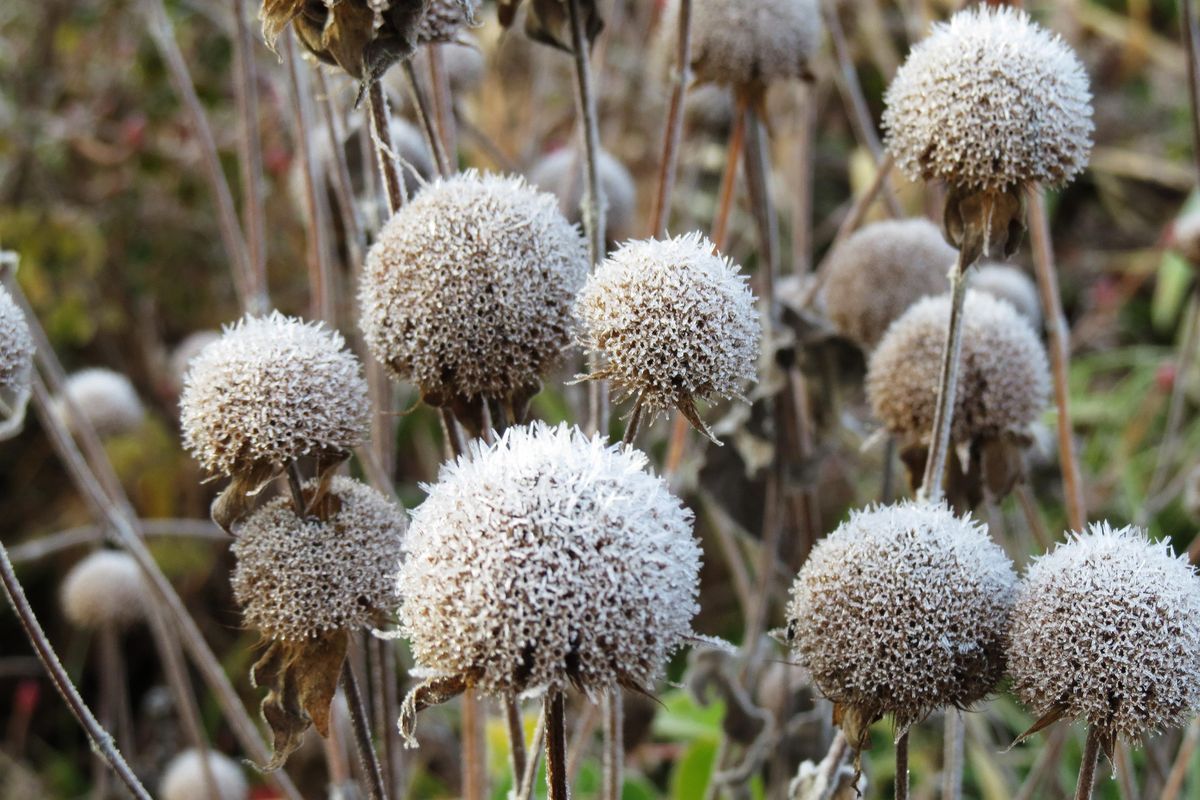In the Garden: Dead flowers can be feast for the birds this winter

After such a hot, dry and smoky summer, I can’t blame you for wanting to clean up your yard and move on to other things. But before you get started, I have a request: leave something for the birds to eat this winter.
A few years ago, fall came much earlier than usual. I ended up skipping my yard clean-up and figured I’d catch up in the spring. I’ve heard some gardeners do this on a regular basis but have to admit I was worried about feeling overwhelmed by the time spring arrived.
Every time I looked out a window that fall and winter, I was met with views of untidy flower beds that gave testimony to the “lazy gardener” indoors. Were neighbors and other passersby judging my gardening abilities, I wondered?
One wintry day, something wonderful happened. As I glanced out the window, a slight movement caught my eye. To my delight, I saw a goldfinch perched on the top of a black-eyed Susan seedhead, nibbling away. At one point, it had one foot on one spent flower, the other foot on a second, and was precariously close to doing the splits.
I was mesmerized. And, of course, I grabbed my video camera to capture the moment.
While glancing around the yard, I saw more birds on flowers that had long since turned brown through the series of frosts and snowstorms. It was gratifying to discover I had inadvertently left them a much-needed source of food.
While it’s true we gardeners like everything to be tidy at the end of the growing season, you can see there’s a very good reason for leaving plants with seed-filled flower heads where they grew this summer. In addition to coneflowers, some of the best ones are bee balm, black-eyed Susan, lavender, globe thistle and sunflower.
You might think lavender flowers aren’t worth saving, but my husband and I made a delightful discovery a couple of winters ago. As we headed outside for a morning walk through a few inches of newly-fallen snow, we suddenly detected the pleasant scent of lavender.
It turns out birds had been eating the seeds on the flower stalks, which released the lavender essence. Because of this, we now wait until early spring to trim back our lavender plants.
If you are concerned about ending up with hundreds of volunteer plants come spring, I can tell you that hasn’t been a problem for us. That must mean our birds are good eaters, I guess. If it does happen, however, some quick early spring weeding will resolve that problem.
As you walk through your garden this fall, look to see which types of flowers your bird friends would enjoy during the colder months of the year. The seeds are such an important nutrition source for them.
Just in case you worry about feeling behind by leaving those plants in place, remember that there are plenty of yard-tidying projects you can do this fall, without adversely affecting the birds. They include dividing perennials, pruning tree branches that might be a problem during the winter, cutting back raspberry canes that produced this year, and mulching your flower and shrub beds to prevent frost heaving.
As I’ve mentioned in the past, our goal has been to attract birds to our landscape. In addition to being a delight to watch, most birds are insectivores which helps keep our garden healthy.
To witness just how much birds love nibbling on seed heads, watch this week’s “Everyone Can Grow A Garden” video at youtube.com/c/susansinthegarden.
Susan Mulvihill is co-author of “Northwest Gardener’s Handbook” with Pat Munts. Contact her at Susan@susansinthegarden.com.